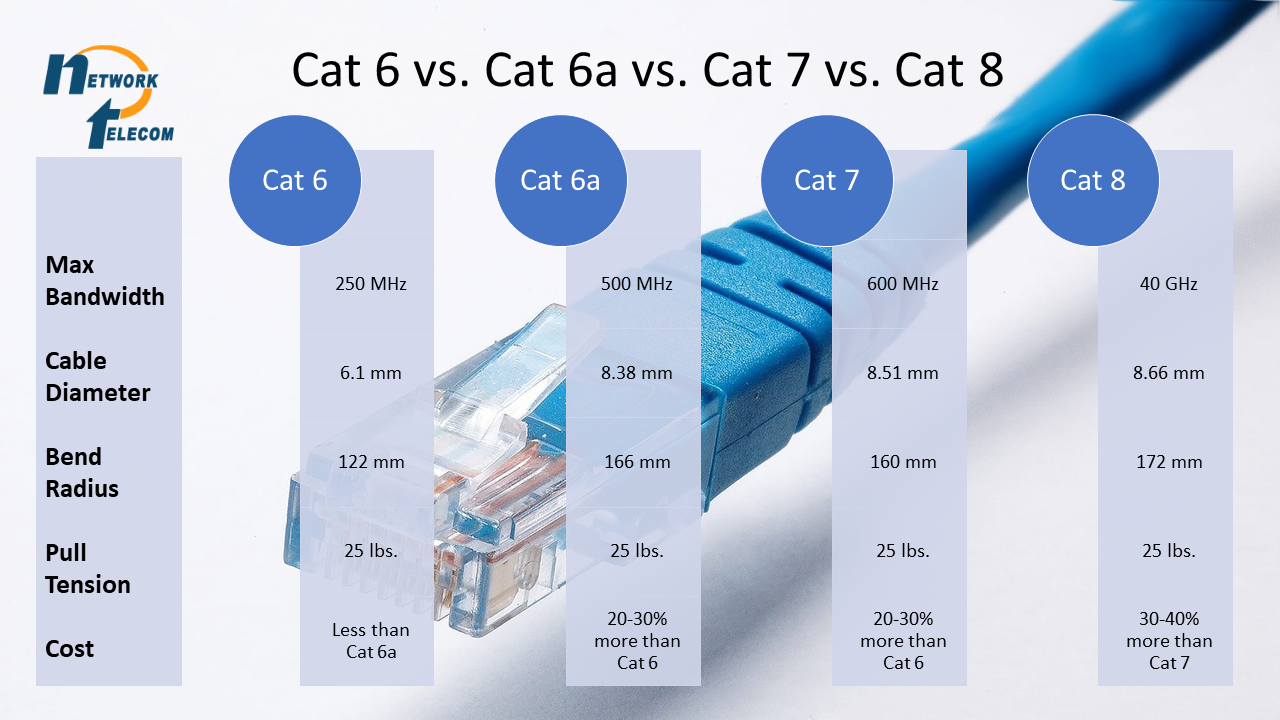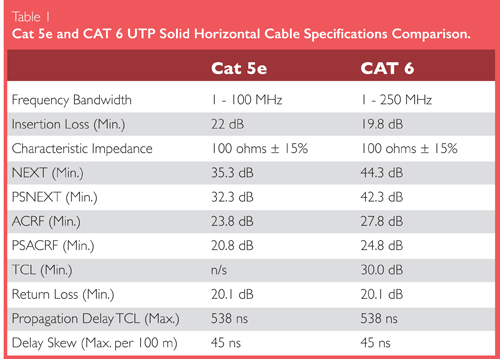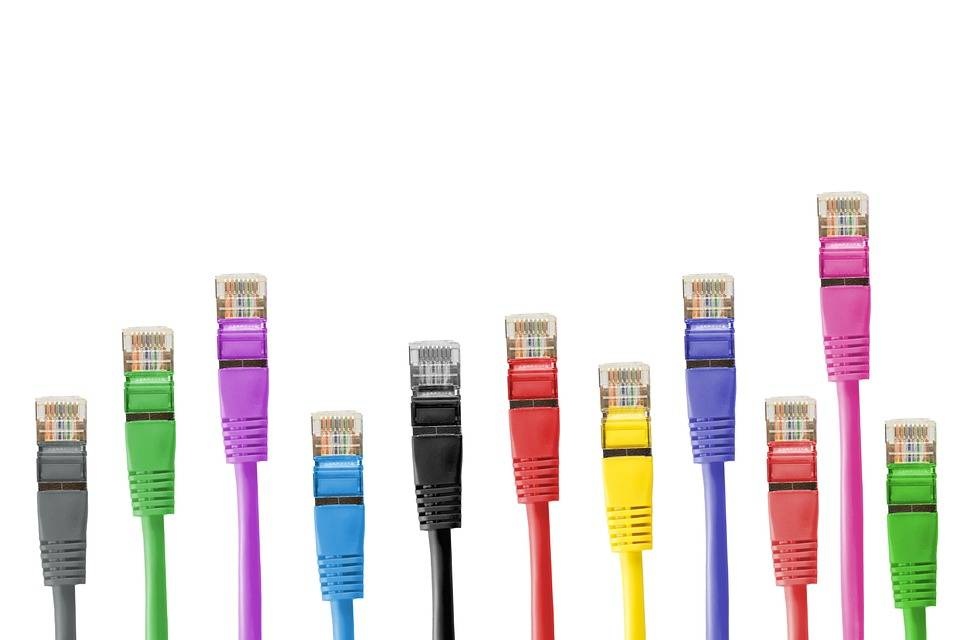Cat 6 Bandwidth Limit
Cat 6 supports data transfer speeds up to 10 Gbps at 250 MHz with even less or no crosstalk interference due to the cables improved insulation. The maximum cabling length of Cat7 network cable is 100m with 10 Gbps while Cat8 of 30m with 25 Gbps or 40 Gbps.
Cat 5 Cat 5e Cat6 Cat6a Cat7 Cat8 Cable Standards Cablek
Theoretically Cat 6 Ethernet cable supports approx.

. If a small Cat6 cable melts because you paired it with a heavy-duty appliance you will start a fire. Potential Bandwidth per sec 1Gb. 0 - 250 MHz.
You can do Gigabit Ethernet up to 100 meters over CAT6. The data transmission. Bandwidth attenuation noise crosstalk and electrical disturbances.
As for cable price of Cat7 vs Cat8. Posted March 11 2016. 1000 Mbps uses five voltages to send two bits per symbol.
Support 101001000 Mbps megabits per second speed to 328 feet 100 meters. 0 - 250 MHz. The bandwidth limits the number of symbols per second or baud rate.
100 M But is there any other cable which can support around 160-180M with 100 Mbps LAN speed. Its not cable length thats the issue but signal attenuation. In the past Cat 6A cables were always typically larger in diameter because they operate at frequencies of up to 500 MHz which is twice as high as Cat 6 and require thickermore materials such as outer jackets or larger splines to adequately control noise and crosstalk at these levels.
Time to transfer 1 Terabyte. I use a 10m Cat 5e cable for my connection between modem and my PC to support a 100Mbps Up and 9Mbps download rate. Cat6 supports 10BASE-T 100BASE-TX 1000BASE-T and 10GBASE-T standards frequencies up to 250 MHz and it can handle up to 10 Gbps in conditions of throughput with the utmost cable length of 55 meters.
In either case short high-speed runs. Cat7 cable offers the performance of up to 600 MHz while Cat8 cable up to 2000 MHz. Notice that when dealing with things like single mode fibre you can go a lot further than multi mode.
The Category 6 Augmented cable standard or Cat 6a was created to further improve the performance of Cat 6 Ethernet cables. On Cat7 vs Cat8 comparison transmission frequency and cabling length are also of great importance. Using Cat 6a enables 10 Gigabit Ethernet data rates over a single cable run up to 328 feet.
When used for Ethernet which is the primary use for CAT6 cable the limits are 55 meters and 100 meters. It is a question of safety. The price of ethernet cables vary by length manufacturer and seller.
12 rows CAT6. Cat 6 Speed Up to 10 Gbps Max Cat 6 is pricier and faster than Cat 5e but also limited by distance. If you select a properly specd cable with certification then Cat6 cable will do great at this distance.
Cat 6a supports data transfer at a maximum bandwidth of 500MHz at a rate of up to 10Gbps. However its 10 Gbps speed is effective only up to 164 feet. This is according to standards set by the telecommunications industry.
For twisted-pair Ethernet maximum cable length is 100 m Cat-6A for 10GBASE-T Cat-5e for 1000BASE-T or 100BASE-TX Cat-3 for 10BASE-T. Supporting frequencies of up to 250 MHz and the 10BASE-T 100BASE-TX 1000BASE-T and 10GBASE-T standards it can handle up to 10 Gbps in terms of throughput. They are also backward compatible with Category 5e and category 6.
Category 6 cable Cat 6 is a standardized twisted pair cable for Ethernet and other network physical layers that is backward compatible with the Category 55e and Category 3 cable standards. If there is heavy cross talk potential large bundles of cable run together a distance limit of 110 feet 33 meters should be observed. As mentioned previously Cat6 cables can be used to power 10GBASE-T or 10 Gigabit Ethernet while the maximum that Cat5e cables can support is 1GBASE-T or 1 Gigabit Ethernet.
The cable standard specifies performance of up to 250. You can do 10 Gigabit Ethernet up to 55 meters over CAT6. Thanks to better cable insulation CAT6 reduces potential crosstalk even more so than CAT5e.
Cat 6 must meet more stringent specifications for crosstalkand system noise than Cat 5 and Cat 5e. The good thing about this cable is that it can also run 10GB at 55 meters. 6 rows A Cat6 patch cord has a bandwidth capacity of 250 MHz which has even stricter specifications.
First here is a technical comparison between Cat 6 vs Cat 6A cable. Cat6a is a 10 Gigabit Ethernet over Copper proposal to the Cat6 standard. Cat 6 supports 10 Gigabit Ethernet only up.
Cat6 cable is rated for 250MHz and 1GB up to the 100 meters. RJ45 8P8C for CAT6 RJ45 for CAT6 Frequency Range Minimum. Answer 1 of 5.
TIAs CAT6 standard sets the bar for CAT6 cables and connectivity. This cable has tighter and extra twists with enough insulation to minimize crosstalk. Listed below are some of the points that would come in handy while you buy that perfect cable that matches your networking and data-transfer needs.
Cat 6 cable on the other hand is certified to handle Gigabit speeds. To get 10 Gigabit up. Enhanced Cat6 550Mhz Snagless Patch Cables can handle bandwidth intensive applications up to 550 Mhz and beyond.
If a Cat6 cable can carry a maximum of 22 amps you can limit its use to applications whose electrical requirements dont exceed 22 amps. Phone Lines Home Network Office Network Data Center. Yes beyond 50 meters Cat 6 and Cat 5e are both speced at 1000 Mbps There are five limiting factors.
For back-end high-capacity networking CAT6 supports Gigabit Ethernet needs. According to this article Cat 5e supports up to 1Gbps and Cat 6 supports 10Gbps. Cat7 vs Cat8.
It uses all four twisted pairs. This is because Cat6 cables perform up to 250 MHz more than twice that of Cat5e cables 100 MHz. The only exceptions are 25G and 5GBASE-T where the maximum length depends on cable grade and and 25GBASE-T or 40GBASE-T which are limited to 30 m 24 m horizontal over Cat-8.

Cat 6 Vs Cat 6a Vs Cat 7 Simply Explained

Cat 5e And Cat 6 Ethernet Cabling Differences

What Is The Difference Between Cat 6 And Cat 7 Netwerkkabel Eu

Cat6 Max Speed How Fast Can You Go 2022 Infinity Cable Products
No comments for "Cat 6 Bandwidth Limit"
Post a Comment